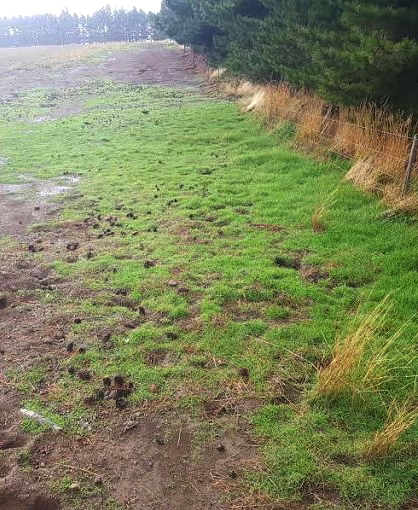Could an agent for brome tell friend from foe?
There are over 150 grass species in the genus Bromus. Despite some Bromus species being useful pasture grasses, many are unwanted weeds. Two of the most weedy and problematic Bromus species in New Zealand are downy brome (B. tectorum) and ripgut brome (B. diandrus). Ripgut brome gets its name from the injuries it causes to the intestines of sheep due to its sharp, rigid seeds. Downy brome seeds are not quite as hard on the gut, but are produced in abundance (more than 300 per plant) and germinate quickly. One small clump of downy brome easily expands into a large population, reducing soil moisture and rapidly outcompeting more palatable grasses.
Downy brome is mostly problematic in the South Island, whereas ripgut brome occurs in many locations throughout New Zealand. Downy brome readily grows in disturbed sites such as waste areas, while ripgut brome grows in both disturbed and undisturbed vegetation.

A recent study has explored the potential of using plant pathogens for the biocontrol of downy and ripgut brome in New Zealand. Weedy brome species are a challenging target for biocontrol since there are desirable grasses in the same genus as well as in closely related genera. This means that any biocontrol agents for weedy brome grasses would need to be highly host specific. The study found that there are 40 fungi and one bacterium associated with downy brome alone, five fungi and one bacterium that use ripgut brome alone, and seven fungi that are associated with both species. While this sounds like a lot, only a few are sufficiently host specific and damaging to the weeds to be potentially useful.
Downy brome is a very problematic weed in both Canada and the US, and US scientists have already been investigating some of these fungi as the basis for bioherbicides. The two microbes that have received the most attention are a seed pathogen (Pyrenophora semeniperda) and a smut (Ustilago bullata). “However, after more than a decade of research, it has been concluded that neither pathogen is an ideal candidate, and unless there is an unexpected breakthrough, we would probably be wasting our money pursuing them,” stated Jane Barton, who conducted the feasibility study.
Another fungus with potential as an inundative biocontrol agent, which has not been studied, is a stem smut (Tranzscheliella hypodytes) that is present in New Zealand. Hosts of this smut fungus are not limited to the genus Bromus, but an inundative agent does not need to be as host specific as a classical one, because it is not expected to cause significant disease outside the area where it is applied. “While this smut has been reported from downy, but not rip-gut brome in the field, tests would probably show it could damage several weedy Bromus species,” speculated Jane. However, given the cost of developing a bioherbicide, and that the literature does not suggest it causes devastating disease outbreaks, it is unlikely to be a commercially viable option.
The fungus with the most potential as a classical biocontrol agent is a rust (Puccinia tsinlingensis) that has not been recorded as present in New Zealand. “The reported host range is broader than I would like,” said Jane, “but taxonomic studies give us reason to hope that there might be more specific subspecies or strains within this species.” While this rust has been reported in the field from downy brome but not ripgut brome, its hosts include several Bromus species and it would not be surprising if tests revealed it could damage both weedy brome species.
So, while the feasibility study did identify some pathogens with potential as biocontrol agents, there remain two large obstacles. Firstly, we need to know more about which Bromus species are valued as pasture grasses in New Zealand, and what the negative financial impact would be if these were damaged by a biocontrol agent. Secondly, brome grasses tend to invade pastures in fairly marginal areas, where profit levels per hectare are low. Farmers in such areas may not be able to afford an expensive bioherbicide, and there is anecdotal evidence that weedy brome grasses can be successfully controlled with appropriate (and more affordable) land management practices, such as the application of fertiliser. So before going any further it would be prudent to thoroughly assess all the costs and benefits of a biocontrol approach. “We know farmers see ripgut brome as the enemy while valuing other Bromus species, but we don’t know if they would be willing to sacrifice the ‘good guys’ in order to get rid of the ‘bad guys’, or how much they can afford to pay to get rid of the latter,” concluded Jane.
This feasibility study was funded by the Agricultural and Marketing Research and Development Trust (AgMardt) (Brome Grass Biocontrol Group; Grant no. A19023). Jane Barton is a contractor to Manaaki Whenua – Landcare Research.
